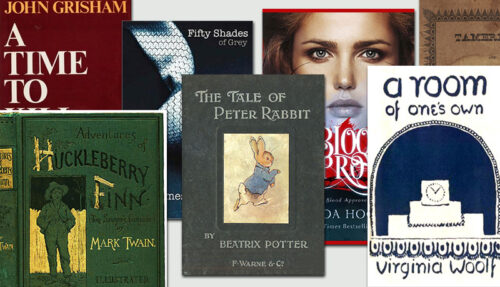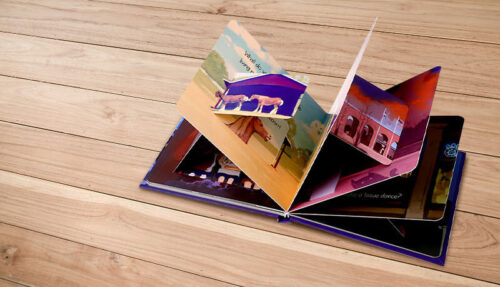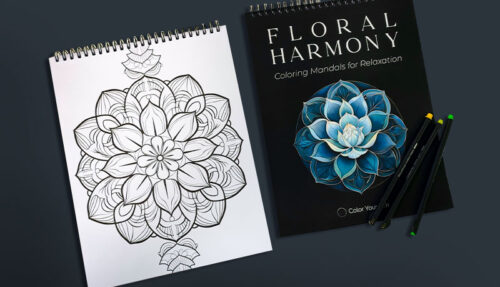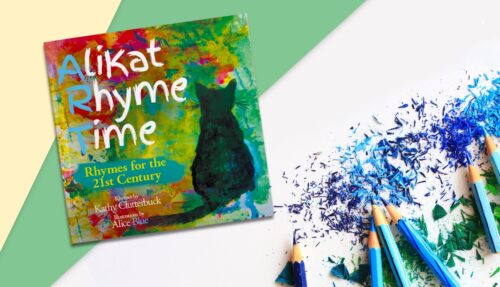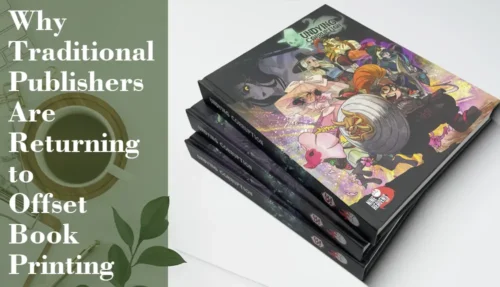We introduce you to the fundamentals of conceiving, designing, printing, and self-publishing your artwork as a book
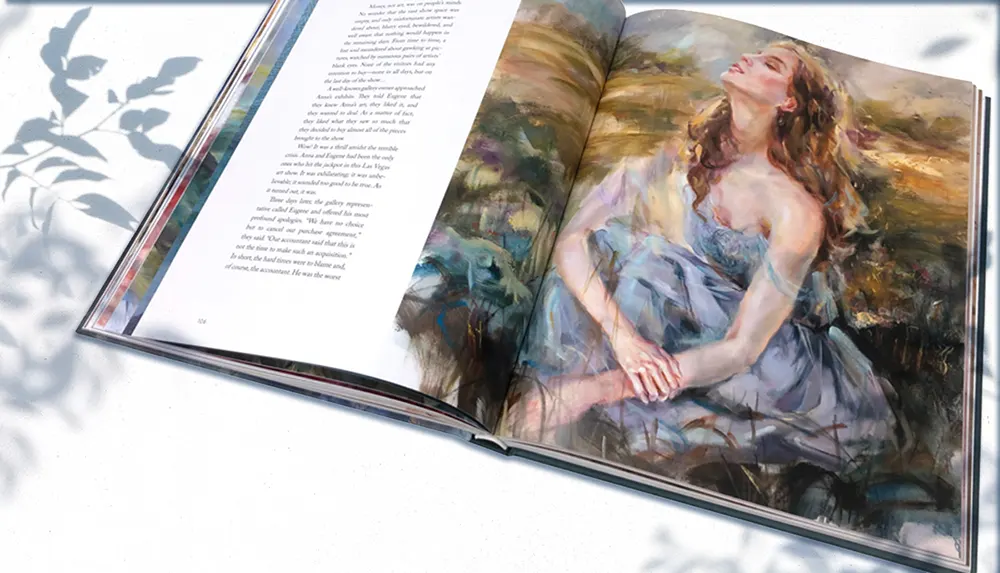
Why an art book?
If you’re a visual artist — a painter, sculptor, digital artist, photographer, or any other kind — publishing your own art book can help you build your reputation, enhance the presentation of your work, and reach more potential buyers. Think of it as a portable gallery. Not only a portable gallery, but one in which you have control over how the work is viewed; in which the lighting is always perfect; and which your potential clients and customers get to take home with them!
While many of the fundamentals of art book publishing are similar or the same as for publishing any other large-scale hardcover book, the art book has its own special aspects, too. Most art books, as you would expect, are predominantly visual. They exist to show off your art. This core fact impacts several key considerations of your book’s design:
- Size and layout — an art book, in order to have greater visual impact and to allow the viewer to get a detailed appreciation of your work, are generally larger than most other genres. They are often also orientated differently; so, think landscape rather than portrait (unless, perhaps, it’s a book of portraits!)
- Paper and materials choices — as you’ll most likely be printing full-color or high resolution black-and-white images on most pages, you’ll need a heavy gloss or matte coated paper stock for the interior and a hard casing wrapped with printed paper and possibly a dust jacket with flaps for the cover. You may also want to add gilding to the page edges, a silk marker ribbon, and even a slipcase.
- Special finishes and effects — art books deserve enhancing when appropriate with special techniques such as embossed titles, UV spot coating (to highlight a key feature) or metallic foil stamping, for example. You may wish to combine several effects to give your book a truly exclusive look and feel; such as soft-touch lamination with an embossed and gold stamped title, as an example.
The complexity of art books means they usually need several types and qualities of paper, such as matte or offset paper for the text-based introduction chapter and acknowledgments; C2S (coated on two sides) gloss art paper for the interior pages; textured paper for the end papers; and laminated cover paper for the cover, with C1S paper (coated only on the side to be printed) for the dust jacket.
You’ll certainly be familiar with the range and quality of art books. As an artist, you’ll have spent many happy hours browsing through them and studying their contents. But it’s one thing to browse and art book as an artist or reader, and another to appreciate the technicalities and processes that go into making one. But one thing’s for sure: an excellent art book is more than just a presentation of your art; it should be a work of art in its own right.
Properly designed and printed, an art book can do wonders to draw attention to your portfolio of work and lead to more exhibitions and sales.
An art gallery between covers
Art books are unlike any other genre as they have a clear corollary in the “real world”. And that’s the physical art gallery—whether a huge institution like MoMA in New York, the Tate Modern in London, or the Pompadou Center in Paris, or a tiny backstreet gallery owned and run by a single, private entrepreneur/enthusiast. In this sense, the content of an art book needs the same careful curation as a gallery exhibition.
So, there’s more to it than just gathering photographs of your work and fitting them on the pages. You need to think in terms of the relationship – material, conceptual, contextual, chronological—between the selected works and choose an order in which to present them. Few exhibitions have no interpretive text to support them, so even if 90% of the work is visual, you’ll need a certain amount of writing even if it’s no more than the title, medium, and date of completion for each piece.
In a real art gallery, you rarely have control over the order in which viewers experience the work. Some will work logically from one piece to the next in a clockwise or ant-clockwise order; others will longer over only two or three selected works; others again will zigzag across the room, drawn by whatever catches their eye next. While this is true to a degree with the art book—it’s perfectly possible, for example, to flick through the pages and alight on whatever interests you in the moment—many people will open a book at the beginning. So, at that point, the layout and organization of your book (into clearly themed chapters of sections, for example, or some chronological order) can guide them through the work as you would prefer they discover it.
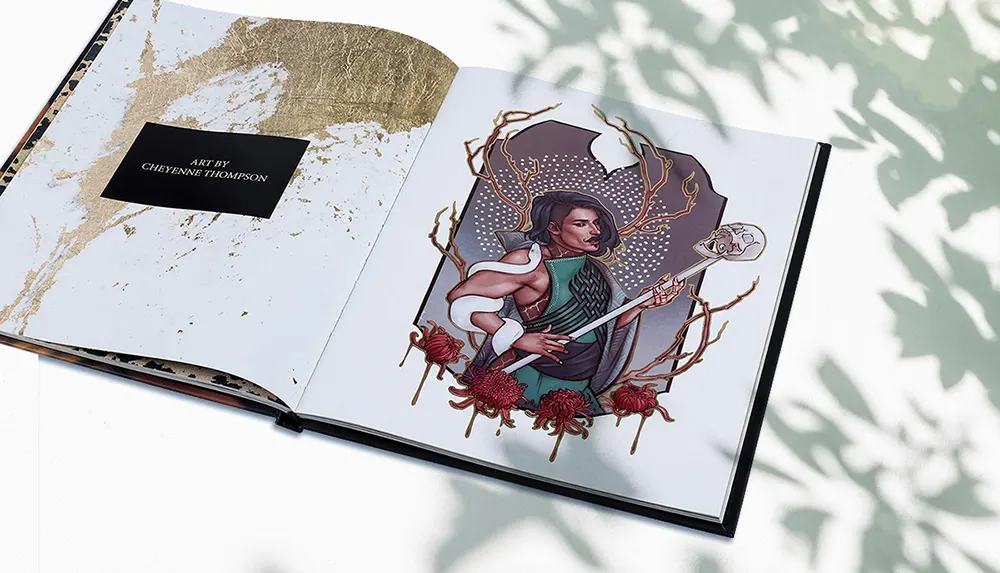
What are the text elements that contribute to a great art book?
Aside from considerations about the images and the layout, several text elements can make a powerful end enriching contribution to the quality of an art book. You needn’t include them all—although you can, of course. They are:
- An introduction—this will often be brief and discuss the style and inspiration behind the work and the principles you used to guide the curation. You may also add suggestions and hints about how the reader should approach the work to get the best experience from it.
- Explanatory paragraphs—these could be short to accompany each piece, or linger to provide context for a section or chapter. You might use them to discuss your process, the materials used, and other artistic reflections on the work presented.
- A personal essay—this is a deeper dive into your art and yourself as an artist. It can include history, formative experiences, philosophies, ambitions, and deep reflections on your artistic journey so far.
- Biography—your artist biography may be as simple as a resumé or a more detailed narrative account of your artistic education and main exhibitions to date
- Exhibition resumé—a listing of your best exhibitions; titles, names of galleries, dates, curators, etc.
Now, as we said before, you needn’t include all of these text elements. Just pick and choose those you want or are most comfortable with. And don’t worry if you haven’t the confidence to write them yourself; there’s no shame in engaging the services of a ghost writer, who will interview you, read any accompanying notes, and work up the text for you. You can then check it to make sure it’s factually accurate and reflects your tone and personality before giving approval. Likewise, none of these text sections need be very long. They may be anything from a short paragraph to several pages. It all depends on your vision for the book. One suggestion we’d make, however, based on over 25 years working with artists on developing and printing their work, is an art book should always have more art in it than text. As a rule of thumb, the text shouldn’t constitute more than 20% of the book’s real estate. Give the other 80% over to the work itself.
Why self-publish your art book?
Throughout the course of your artistic career, you may choose to self-publish some of the time and seek an agent’s representation and a deal with a traditional publishing house another time. On the whole, for most artists’ needs—especially if you don’t yet have at least national name recognition—the self-publishing route is the best first step. Here’s why we think so:
- You’ll have complete control over your art book and how it’s presented. In our experience, because curating your own work is such a personal thing for so many artists, this matters a great deal. With a mainstream publisher, you may have no say at all.
- Getting an agent can take a long time, even years. Then getting a publishing deal can take months or years. And even then, mainstream schedules are Jurassically slow. In all, you may have to wait at least five years before your book gets published. If you self-publish, as soon as you’re happy with the design side, the printing will take from a few weeks to a month or so, and you can publish immediately after that.
- You have more control over the risks. So, for example, a mainstream publisher may want you to sell at least 5,000 copies before you can earn back any royalties. Whereas with a self-published book, you could start with a short run of, say, 100 copies and order a longer run if you have success.
- A mainstream publisher will only offer you royalties, which can be as little as 3% of net sales. If you self-publish, you can keep 100% of the profits. Also, if you don’t need to sell the books but only distribute them, self-publishing is the obvious choice.
While it’s true that you’ll need to handle all the content creation, design, and layout work yourself, that needn’t be a barrier for a creative person. And you can always outsource any work you’re not comfortable with.
Would you like to know more? Talk to us!
I you’d like to create your own art book, and if you decide that the self-publishing route is for you — as it is for many successful independent artists— then please get in touch. We’d love to hear about your art book concept and discuss how we could help you realize the optimal version of your “portable art gallery”. We have an enthusiastic team of experts, the latest technology, and a sincere dedication to customer service. We’d love to help you make your art book a reality. Let’s talk!






